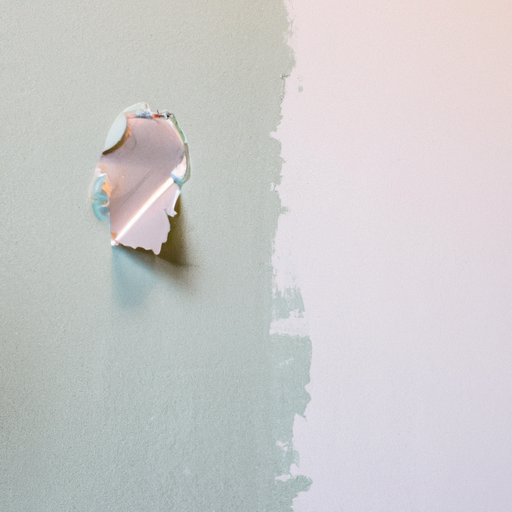Introduction
Nail holes are small holes caused by nails or screws that are used to hang pictures or other objects on walls. The holes may be unsightly, and can create a messy look in a room. Fortunately, there are several ways to fill nail holes in walls, depending on the type of material you are using.
Sandpaper and Spackling Compound
One of the most common ways to fill nail holes in walls is with sandpaper and spackling compound. To use this method, start by sanding the area around the hole with sandpaper. This will help smooth out any rough edges and make it easier for the spackling compound to adhere. Once the area is sanded, apply the spackling compound to the area with a putty knife, then allow it to dry. Finally, sand the area again to ensure a smooth finish.
One of the advantages of using sandpaper and spackling compound is that it is relatively easy to do and does not require any special tools or materials. Additionally, it is very effective for filling small nail holes in walls.
Wood Putty
Another option for filling nail holes in walls is to use wood putty. This is a type of filler that is specifically designed for use on wood surfaces. To use wood putty, start by cleaning the area around the hole with a damp cloth to remove any dust or debris. Then, apply the putty to the hole using a putty knife, making sure to press it into the hole. Allow the putty to dry, then sand the area to ensure a smooth finish.
The main advantage of using wood putty is that it is specifically designed for use on wood surfaces, so it is more likely to bond well with the surface and provide a better result. Additionally, it is relatively easy to use and does not require any special tools or materials.
Drywall Compound
If you are filling nail holes in drywall, then drywall compound is an ideal choice. To use this method, start by cleaning the area around the hole with a damp cloth to remove any dust or debris. Then, apply the drywall compound to the hole using a putty knife, making sure to press it into the hole. Allow the compound to dry, then sand the area to ensure a smooth finish.
The main advantage of using drywall compound is that it is specifically designed for use on drywall surfaces, so it will bond well and provide a good result. Additionally, it is relatively easy to use and does not require any special tools or materials.
Wall Filler
Wall filler is another option for filling nail holes in walls. This is a type of filler that is specifically designed for use on walls. To use wall filler, start by cleaning the area around the hole with a damp cloth to remove any dust or debris. Then, apply the filler to the hole using a putty knife, making sure to press it into the hole. Allow the filler to dry, then sand the area to ensure a smooth finish.
The main advantage of using wall filler is that it is specifically designed for use on walls, so it is more likely to bond well with the surface and provide a better result. Additionally, it is relatively easy to use and does not require any special tools or materials.
Toothpaste
Believe it or not, toothpaste can also be used to fill nail holes in walls! To use this method, start by cleaning the area around the hole with a damp cloth to remove any dust or debris. Then, apply a small amount of toothpaste to the hole using your finger, making sure to press it into the hole. Allow the toothpaste to dry, then sand the area to ensure a smooth finish.
The main advantage of using toothpaste is that it is readily available, so you don’t need to buy any special materials. Additionally, it is relatively easy to use and does not require any special tools.
Conclusion
In conclusion, there are several options for filling nail holes in walls, including sandpaper and spackling compound, wood putty, drywall compound, wall filler, and even toothpaste. Each method has its own advantages, so it is important to choose the one that best suits your needs. No matter which method you choose, it is important to follow the instructions carefully and ensure a smooth finish.
With the right materials and a little bit of patience, you can easily fill nail holes in walls and give your home a clean, finished look.


